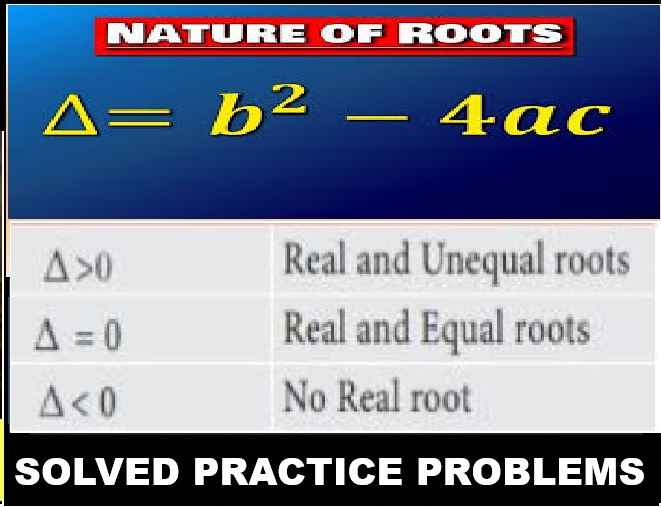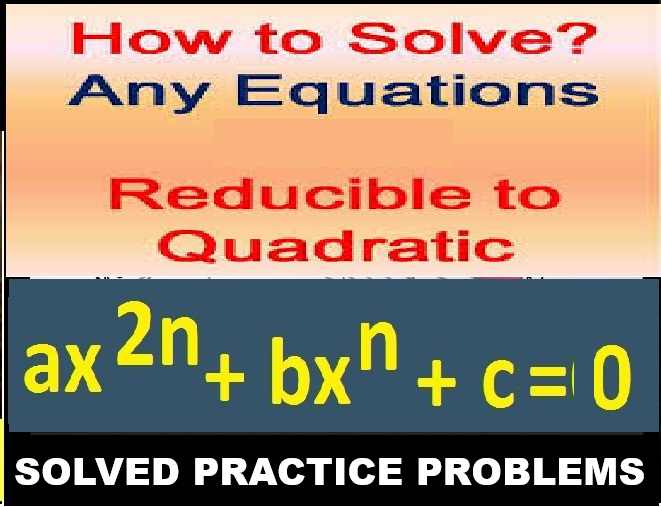Sets Class- 7th RS Aggarwal Exe-6 C Goyal Brothers ICSE Math Solution . We provide step by step Solutions of lesson-6 Sets for ICSE Class-7 Foundation RS Aggarwal Mathematics of Goyal Brothers Prakashan . Our Solutions contain all type Questions of Exe-6 C to develop skill and confidence. Visit official Website CISCE for detail information about ICSE Board Class-7 Mathematics. We would learn in this article about operations on sets in details.
Sets Class- 7th RS Aggarwal Exe-6 C Goyal Brothers ICSE Maths Solution
| Board | ICSE |
| Publications | Goyal brothers Prakashan |
| Subject | Maths |
| Class | 7th |
| Chapter-6 | Sets |
| Writer | RS Aggrawal |
| Book Name | Foundation |
| Topics | Solution of Exe-6 C |
| Academic Session | 2023 – 2024 |
operations on sets
Set operations can be defined as the operations that are performed on two or more sets to obtain a single set containing a combination of elements from both all the sets being operated upon.
Type of operation on set
There are basically three types of operation on sets in Mathematics; they are: The Union of Sets (∪) The Intersection of Sets (∩).
The Union of Sets (∪)
The union of two sets A and B is defined as the set of all the elements which lie in set A and set B or both the elements in A and B altogether. The union of the set is denoted by the symbol ‘∪’.
The Intersection of Sets (∩)
The intersection of sets A and B is the set of all elements which are common to both A and B.
Exercise – 6 C
Sets Class- 7th RS Aggarwal Goyal Brothers ICSE Maths Solution
1. Let A = {2, 4, 6, 8}, B = {6, 8, 10, 12} and C = {7, 8, 9, 10}. Find :
(i) A ∪ B
Answer: A ∪ B = {2, 4, 6, 8, 10, 12}
(ii) A ∪ C
Answer: A ∪ C = {2, 4, 6, 7, 8, 9, 10}
(iii) B ∪ C
Answer: B ∪ C = {6, 7, 8, 9, 10, 12}
(iv) A ∩ B
Answer: A ∩ B = {6, 8}
(v) A ∩ C
Answer: A ∩ C = {8}
(vi) B ∩ C
Answer: B ∩ C = {8, 10}
2. Let P = {x : x is a factor of 18} and Q = {x : x is a factor of 24}.
(i) Write each one of P and Q in Roster form.
Answer: (i) P = {1, 2, 3, 6, 9, 18}, Q = {1, 2, 3, 4, 6, 8, 12, 24}
(ii) Find : (a) P ∪ Q (b) P ∩ Q
Answer: (ii) (a) P ∪ Q = {1, 2, 3, 4, 6, 8, 9, 12, 18, 24}
(b) P ∩ Q = {1, 2, 3, 6}
3. Let A = {a, b, c}, B = {b, d, e} and C = {e, f, g}, verify that :
(i) A ∪ B = B ∪ A
Answer: A ∪ B = {a, b, c, d, e}………..(i)
B ∪ A = {a, b, c, d, e}………….(ii)
By (i) and (ii), we get
A ∪ B = B ∪ A
(ii) (A ∪ B) ∪ C = A ∪ (B ∪ C)
Answer: B ∪ C = {b, d, e, f, g}
A ∪ (B ∪ C) = {a, b, c} ∪ {b, d, e, f, g}
= {a, b, c, d, e, f, g}……(i)
(A ∪ B) ∪ C = {a, b, c, d, e} ∪ {e, f, g}
= {a, b, c, d, e, f, g}…….(ii)
From (i) and (ii) we get
(A ∪ B) ∪ C = A ∪ (B ∪ C)
(iii) A ∩ B = B ∩ A
Answer: A ∩ B = {b}……(i)
B ∩ A = {b}…..(ii)
From (i) and (ii) we get
A ∩ B = B ∩ A
(iv) (A ∩ B) ∩ C = A ∩ (B ∩ C)
Answer: (A ∩ B) = {b}
(A ∩ B) ∩ C = {b} ∩ {e, f, g}
= { } or ∅……(i)
(B ∩ C) = {e}
A ∩ (B ∩ C) = {a, b, c} ∩ {e}
= { } or ∅……(ii)
From (i) and (ii) we get
(A ∩ B) ∩ C = A ∩ (B ∩ C)
4. Let A = {x : x is a multiple of 2, x < 15}, B = {x : x is a multiple of 3, x < 20}, C = {x : x is a prime, x < 20}.
(i) Write each one of the sets A, B, C in Roster form.
Answer: (i) A = {2, 4, 6, 8, 10, 12, 14}
B = {3, 6, 9, 12, 15, 18}
C = {2, 3, 5, 7, 11, 13, 17, 19}
(ii) Find : (a) A ∪ B (b) A ∪ C (c) B ∪ C (d) A ∩ B (e) A ∩ C (f) B ∩ C
Answer: (a) A ∪ B = {2, 3, 4, 5, 6, 7, 8, 9, 10, 11, 12, 13, 14, 17, 19}
(b) A ∪ C = {2, 3, 5, 6, 7, 9, 11, 12, 13, 15, 17, 18, 19}
(c) B ∪ C = {2, 3, 5, 6, 7, 9, 11, 12, 13, 15, 17, 18, 19}
(d) A ∩ B = {6, 12}
(e) A ∩ C = {2}
(f) B ∩ C = {3}
5. Let A = {b, d, e, f}, B = {c, d, g, h} and C = {e, f, g, h}. Find :
(i) A – B (ii) B – C (iii) C – A (iv) (A – B) ∪ (B – A) (v) (B – C) ∪ (C – B)
Answer: A = {b, d, e, f}, B = {c, d, g, h}, C = {e, f, g, h}
(i) A – B = {b, e, f}
(ii) B – C = {c, d}
(iii) C – A = {g, h}
(iv) (A – B) ∪ (B – A) = {b, c, e, f, g, h}
(v) (B – C) ∪ (C – B) = {c, d, e, f}
6. Let U = {1, 2, 3, 4, 5, 6, 7, 8, 9, 10} be the universal set and let A = {2, 3, 4, 5, 6} and B = {3, 5, 7, 8} be its subsets .
Find : (i) A′ (ii) B′ (iii) A′ ∩ B′ (iv) A′ ∪ B′
Verify that : (v) (A ∪ B)′ = (A′ ∩ B′) (vi) (A ∩ B′) = (A′ ∪ B)′
Answer: Hance § = {1, 2, 3, 4, 5, 6, 7, 8, 9, 10}
A = {2, 3, 4, 5, 6}
B = {3, 5, 7, 8}
∴ A′ = § – A = {1, 7, 8, 9, 10}
B′ = § – B = {1, 2, 4, 6, 9, 10}
(i) A′
Answer: A′ = {1, 7, 8, 9, 18}
(ii) B′
Answer: B′ = {1, 2, 4, 6, 9, 10}
(iii) A′ ∩ B′
Answer: A′ ∩ B′ = {1, 9, 10}
(iv) A′ ∪ B′
Answer: A′ ∪ B′ = {1, 2, 4, 6, 7, 8, 9, 10}
(v) (A ∪ B)′ = (A′ ∩ B′)
Answer: (A ∪ B) = {2, 3, 4, 5, 6, 7, 8,}, (A ∪ B)′ = U – (A ∪ B) = {1, 9, 10}………(i)
Now (A′ ∩ B′) = {1, 7, 8, 9, 10} ∩ {1, 2, 4, 6, 9, 10}
From (i) and (ii) we get
= {1, 9, 10}………(ii)
∴ (A ∪ B)′ = (A′ ∩ B′)
(vi) (A ∩ B′) = (A′ ∪ B)′
Answer: (A ∩ B) = {3, 5}
(A ∩ B)′ = U – (A ∩ B)
= {1, 2, 3, 4, 5, 6, 7, 8, 9, 10} – {3, 5}
= {1, 2, 3, 4, 6, 7, 8, 9, 10}……..(i)
Now, (A′ ∪ B)′ = {1, 7, 8, 9, 10} ∪ {1, 7, 4, 6, 9, 10}
= {1, 2, 3, 4, 6, 7, 8, 9, 10}………(ii)
From (i) and (ii), we get
(A ∩ B′) = (A′ ∪ B)′
7. Let U = {a, b, c, d, e, f, g} be the universal set and let its subsets be A = {a, b, d, e} and B = {b, e, g}.
Verify that : (i) (A ∪ B)′ = (A′ ∩ B′) (ii) (A ∩ B′) = (A′ ∪ B)′
Answer: (i) (A ∪ B)′ = (A′ ∩ B′)
U = {a, b, c, d, e, f, g}
A = {a, b, d, e}
B = {b, e, g}
∴ A′ = {c, f, g}
B′ = {a, c, d, f}
A ∪ B = {a, b, d, e} ∪ {b, e, g}
= {a, b, d, e, g}
(A ∪ B)′= {c, f}…….(i)
(A′ ∩ B′) = {c, f, g} ∩ {a, c, d, f}
= {c, f}…….(ii)
(i) and (ii), we get
(A ∪ B)′ = (A′ ∩ B′)
Answer: (ii) (A ∩ B′) = (A′ ∪ B)′
(A ∩ B) = {a, b, d, e} ∩ {b, e, g}
= {b, e}
(A ∩ B′) = {a, c, d, f, g}…….(i)
(A′ ∪ B)′ = {c, f, g} ∪ {a, c, d, f}
= {a, c, d, f, g}……..(ii)
From (i) and (ii), we get
(A ∩ B′) = (A′ ∪ B)′
8. Let U = {3, 6, 9, 12, 15, 18, 21, 24} be the universal set and let A = {6, 12, 18, 24} be its subset.
Verify that : (i) A ∪ A = A (ii) A ∩ A = A (iii) A ∩ A′ = ∅
(iv) A ∪ A′ = U (v) (A′)′ = A
Answer: U = {3, 6, 9, 12, 15, 18, 21, 24} and A = {6, 12, 18, 24}
Answer: (i) A ∪ A = A
∴ A ∪ A = {6, 12, 18, 24} ∪ {6, 12, 18, 24}
A ∪ A = {6, 12, 18, 24} = A
Answer: (ii) A ∩ A = A
∴ A ∩ A = {6, 12, 18, 24} ∩ {6, 12, 18, 24}
A ∩ A = {6, 12, 18, 24} = A
Answer: (iii) A ∩ A′ = ∅
∴ A′= ∪ – A
= {3, 9, 15, 21}
Now, A ∩ A′ = {6,12, 18, 24} ∩ {3, 9, 15, 21}
= ∅
Answer: (iv) A ∪ A′ = U
A ∪ A′ = {6,12, 18, 24} ∪ {3, 9, 15, 21}
= {3, 6, 9, 12, 15, 18, 21, 24} = U
Answer: (v) (A′)′ = A
∴ (A′)′ = U – A′
= {3, 6, 9, 12, 15, 18, 21, 24} – {6,12, 18, 24}
= {3, 9, 12, 21}
— : end of Sets Class- 7th RS Aggarwal Exe-6 C Goyal Brothers ICSE Maths Solution:–
Return to- ICSE Class -7 RS Aggarwal Goyal Brothers Math Solutions
Thanks
Please share with yours friends if you find it helpful.


